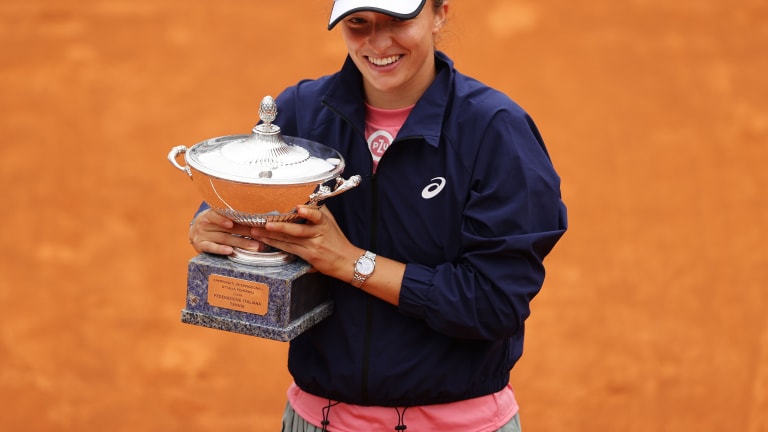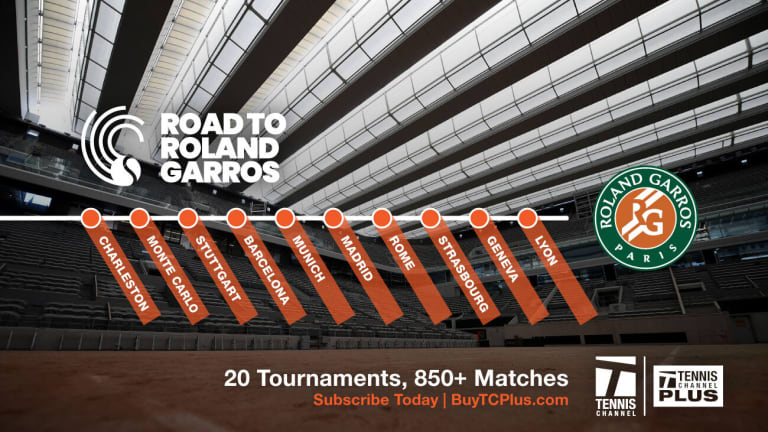Karolina Pliskova has long had one of the most effective serves in tennis. She was also playing in the finals of the Internazionali BNL for the third straight year, today versus reigning Roland-Garros champion Iga Swiatek. But upon winning the pre-match coin flip, Pliskova opted to receive, a curiously passive choice – and, soon enough, an omen of bad things to come.
One-way traffic? More like a vacant freeway on a Sunday morning. In just 46 minutes, Swiatek won this match, 6-0, 6-0. In the first set, the 19-year-old Pole dropped just four points.
Said Swiatek, “from the beginning I felt that she may be a little bit nervous, and I wanted to use that and actually play as many games with that vibe as I can. That's why it was pretty fast at the beginning.”
Not until Pliskova was down 6-0, 2-0 did she hold a game point, reaching 15-40 on Swiatek’s serve. On the first break point, Pliskova struck a forehand return long. The second was vintage Swiatek – a sharp crosscourt forehand, fizzing with her distinct brand of spin and accuracy. Wait a second. Dare we say “vintage” about a player still in her teens?
“But it's not easy to actually win the first set 6-0,” said Swiatek, “because you always have in the back of the mind that your opponent may start playing better and they can change the tactics completely, and then you have to adjust and then you're going to start worrying. So when I was on the breaks, I was visualizing that I'm starting that match from the beginning every time. Actually, I did that so well that I didn't even know that it was 6-0 in the first set.”
Two words defined virtually every rally: margin and movement. Pliskova can be a commanding court presence. On her best days, the 29-year-old Czech smothers opponents with pace and precision. But that kind of flat-based playing style also requires supreme confidence. That’s exceptionally the case for a player like Pliskova, an ordinary mover at best, far more comfortable dictating than retrieving. Add in a mobile opponent, on a surface like clay, in a near-Slam final, and everything can rapidly become unglued.

